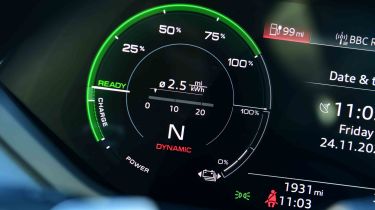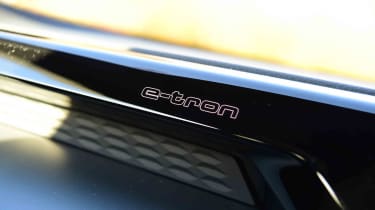Audi e-tron GT - Range, charging and running costs
Zero tailpipe emissions will save company drivers thousands, but the Audi e-tron GT will be expensive to run

No car costing more than £87,000 is going to be a cheap date for a private buyer, electric or otherwise. However, anyone who can run the e-tron GT as a company car is on to an absolute winner thanks to HMRC's efforts to incentivise the uptake of electric vehicles.
The Benefit-in-Kind (BiK) tax rates for the e-tron GT are far lower than they would be for a regular petrol, diesel, hybrid, or plug-in hybrid. This means even a higher-rate tax payer will save thousands running an e-tron GT compared with the equivalent Audi S8.
There’s another financial incentive for road tax or Vehicle Excise Duty, because zero tailpipe emission vehicles are currently exempt from the luxury car premium until 1 April 2025. Beyond this date, they’ll be subject to annual charges, and you can read more about this on our dedicated car tax page.
London-based drivers and those who commute to the capital benefit from being excluded from the Congestion Charge zone, although this will change from 2025 onwards. Other cities around the UK have introduced their own Ultra Low Emissions Zones, so e-tron GT drivers will benefit from reduced costs when driving around these areas, too.
It’s not all a free ride, because you can expect hefty service and maintenance costs from your Audi main dealer, while the combination of vehicle weight and performance means there’s the potential for frequent tyre replacements. You can claw some money back in reduced brake pad and brake disc wear by utilising regenerative braking more often to slow down, though.
Electric range, battery life and charge time
Both versions of the e-tron GT share the same 93kWh (83.7kWh useable) battery, but the extra power of the RS model naturally affects the range you can achieve. Audi quotes an official maximum of up to 305 miles for the e-tron GT quattro and 294 miles for the RS e-tron GT. Naturally, you can expect these figures to drop dramatically if you dig into the phenomenal performance regularly.
Used - available now

2024 Audi
E-Tron GT
19,992 milesAutomaticElectric
Cash £50,900
2024 Audi
E-Tron GT
8,106 milesAutomaticElectric
Cash £50,900
2024 Audi
E-Tron GT
26,723 milesAutomaticElectric
Cash £46,500
2024 Audi
E-Tron GT
26,197 milesAutomaticElectric
Cash £41,920Compared with the maximum 354.2-mile range of the BMW i5, and the near 380 miles you get from a fully-charged Mercedes EQE, the available range of the e-tron GT might be considered wanting, but the Audi fights back with a faster charging capacity of 270kW compared to 250kW for the i5, and only 170kW for the EQE.
Charging an e-tron GT at peak performance means you can get from 10 to 80 per cent state of charge in just over 20 minutes, provided you’ve found a fast enough charger. Most owners will probably look into the convenience of home charging, and using a standard 7kW wall box installation should take around 14 hours to fully recharge a flat battery.
Insurance groups
Insurance costs are not an area where e-tron GT drivers will be able to make savings, as the combination of extreme performance and expensive repair costs means premiums for all models are in the top bracket at Group 50. If you need something cheaper, you should look at a BMW i5, which starts in group 43.
Check your tax status and renewal date in seconds. Check your VED car tax now...
Depreciation
German high-performance saloons have typically looked extremely good value on the used market thanks to crippling depreciation numbers. Unfortunately, the e-tron GT continues this trend, because our experts predict that after three years and 36,000 miles, it’ll retain between 37-44 per cent of its original value, with the pricey Vorsprung trim being the worst performer.
We’d suggest looking at the BMW i5 instead if you need something that depreciates less, because that is predicted to be worth between 49-52 per cent over the same time period.
To get an accurate valuation on a specific model check out our valuation tool...












